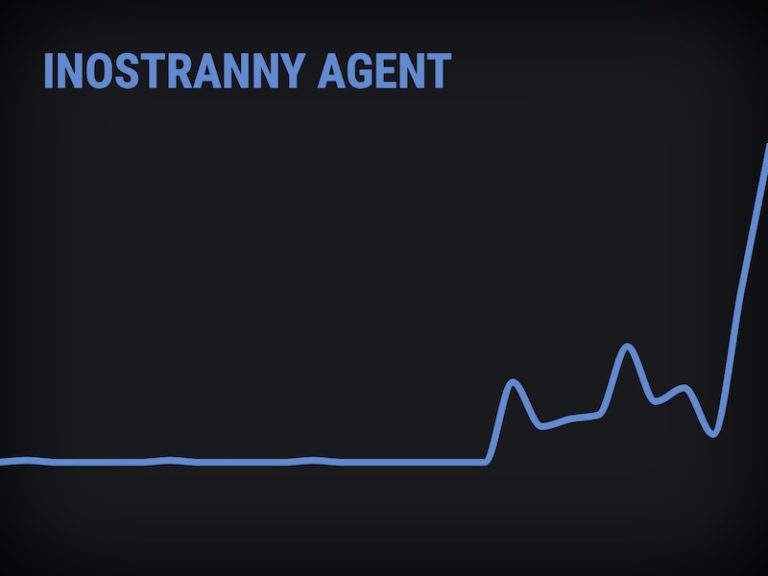What can essays do? How do they do it? And what has to be kept in mind when they are being translated to ensure that they will still be able to do it in the other language? Anja Schloßberger-Oberhammer on the translation of a journalistic form whose importance in times of turmoil lies in the fact that it does not seek to convince its readers of something.
“The times in which the essay flourished were periods of heightened intellectual and societal culture and yet also times of crisis and radical change.”1
Essays being written in (and outside of) Russia today belong to a period marked by more than crisis and radical change. What I, as someone who translates Russian-language essays for a number of different media, find particularly absorbing about the genre is its ability to inspire, even in the worst of times, its seismographic potential (though this, unfortunately, often fades away, like Cassandra’s warnings, unremarked), and its gift for allowing, even in totalitarian systems, a glimpse at the truth (at least) between the lines.
So what is important for me when I have an essay in front of me? What do I examine more closely before starting to translate? It is the way, the HOW the author circles around his subject-matter, his topic. In other words: I examine his attitude, the position he is taking. An essay often takes a highly subjective position to give free rein to its ideas. Since attitude is also what the essay shares with its journalistic cousins, I will concentrate solely on that aspect here, leaving other problems that may be associated with the translation of essays unaddressed.
How can the attitude or subjective positioning of the author in the source text be brought over into another language, if possible, without losing anything along the way? How does something like attitude manifest itself on the textual and receptive surfaces? Does it flash out from between the lines? Does it stand up confidently in front of the reader? Does it emerge from the tension between text and quotation? Perhaps it lies in the tone of voice? Are there markers of irony and sarcasm? Of emotion and graduation? Is something being evaluated, explicitly or implicitly? Is a particular style being evinced? How subjective is the colouring of the text?
Most types of journalistic texts – the essay’s relatives excepted – underline their claim to objectivity through the use of impersonal constructions. By contrast, writing in the essay/feuilleton vein is perfectly content with a personal subject, someone who represents a specific standpoint. However, it does not do so narcissistically, to push itself and its opinion to the fore, but rather because to suggest a general validity for that which is being said would seem like arrogance and hubris on the part of the essayist, who is not approaching his topic with any specific destination in mind.2
OPEN-ENDEDNESS
The essay does not seek to convert, convince, or persuade,3 and therefore it tends not to steer towards any specific outcome.4 It seeks to encourage its addressee to become active. The essay tosses an – often provocative – impetus to its reader with the aim of setting her thoughts into motion. Whether she catches the ball, tosses it aside, or hits it back is a not unimportant indication as to whether the text, and the translation, has succeeded in achieving its aim.
This open-endedness is one reason that it is important for the translator to get the dosage of attitude right: the attitude imprinted on the translated text should not be more explicit/blatant or, conversely, more discreet/subtle than that written into the original text and should thus, ideally, achieve a similar effect. It may well be that other motivations lie behind the attitude written into journalistic opinion pieces and other types of journalistic texts. One thing is certain though: they, too, would lose a part of their soundscape if the elements which make up their attitude were removed or lost in translation.
The issue of attitude is addressed in Angela Kamyanets’ “Evaluation in translation: a case study of Ukrainian opinion articles”.5 In addition to analysing the extent to which the translations she studied succeed in bringing across their original author’s evaluations, assessments or judgements, Kamyanets describes, in linguistic terms, how the author’s attitude manifests itself in the texts, citing examples that illustrate her observations.
HOW IS ATTITUDE EXPRESSED?
In journalistic opinion pieces (such as columns, commentaries and editorials) and essays (a monologue that ultimately functions dialogically),6 the articulation of attitude7 is “dialogically directed towards aligning the addressee into a community of shared value and belief”.8 Whether the author is necessarily trying to bring his readers into a community of shared values, I do not know. What is clear, though, is that the attitude an author packs into his text should not be withheld from the reader. For, as Kamyanets points out: “Clearly, any shifts in the translation of the resources of attitude may alter the ideological position of the text.”9
When an element contributing to the attitude in the source text is altered (moderated, intensified, etc.) in the target text, or even omitted entirely, the text’s ideological position and thus its targeting is shifted, thereby changing the effect the text produces or fails to produce in the reader. Now, it seems self-evident to me, as a translator, that I should translate in such a way that none of the text’s impact is lost. In her study of actual practice in the translation of journalistic texts from Ukrainian to English though, Kamyanets found a tendency towards greater neutrality in the translations than the original texts.10 It would certainly be interesting to look into the situation in other language pairs.
The reasons for this neutralising tendency are surely manifold and varied, but what interests me is the linguistic means and methods used to impart, by implicit or explicit means, attitude to a text. To adopt an attitude is to evaluate something, either covertly or openly. In this sense, “evaluation is the broad cover term for the expression of the speaker or writer’s attitude or stance towards, viewpoint on, or feelings about the entities or propositions that he or she is talking about.”11 As used here, the term “evaluation” covers everything in a text or in speech that expresses the attitude of the author or speaker. This might be, for instance, an adverb or adverbial phrase that intensifies what is written. To leave out an “as it happens”, an “absolutely”, an “utterly” or a “hectically”, would be to deprive the text of some of its colour. It can also take the form of emotional responses attributed to a person or situation. An author also expresses her attitude, explicitly, when she admires, praises, condemns or criticises something or someone.12
One means of communicating attitude that I, personally, cherish in a time when things are often not called by their proper names is “plain language”. When, for instance, politicians, official media and news sources in an authoritarian state use euphemisms with connotations ranging from harmlessness to insolence, an author can express an attitude simply by referring to something by the proper term, without embellishment or judgement. Simply not using the official term suffices to debunk it. Facts speak for themselves.13
Lexical metaphors and similes are another powerful tool for expressing attitude. Both, says Kamyanets, are extremely “ideologically effective”, meaning that they evoke an emotional response.14 However, Kamyanets found that metaphors are often translated through idioms. She concluded that while this did not result in any loss of meaning, it did deprive the sentence of some of its potency: unlike metaphors and similes, idioms are not associated with a tertium comparationis, an element of similarity that two things share. In other words, an idiom does not create a (new) connection between two things, rather, the meaning of an idiom is already familiar to the speakers.15
These are only a few of the many means and methods of expressing attitudethat may be of relevance16 for someone seeking to preserve the original attitude when translating a text, but I hope it will suffice to give a sense of what is involved.
KEEPING THE ATTITUDE
In concluding, I would like to return to the essay as a genre. Very much in vogue in times of heightened intellectual culture, the essay could saunter through the salons, opening itself up to the powers of the imagination at play. In 1965, Hamburger wrote that the “totalitarian systems of this century” made a criminal of the light-footed and aimlessly wandering essay.17 It was true then and it remains true today. However, even in times of crisis – especially in such times –, the essay sticks to its stance, its attitude: even when bullied into the smallest of spaces, it stands with the truth, and, hopefully, stays standing. The more the space for journalists and authors is constricted, the more care and caution must be devoted to keeping the attitude.
POSTSCRIPT FOLLOWING THE START OF THE WAR
In 2021, so prior to Russia’s war of aggression, prior to the invasion of Ukraine, the situation with speech in Russia – by which I mean freedom of speech and creation – was already deteriorating for opposition-minded authors, poets and artists. Due to various changes in the law, sham investigations and prosecutions – some with criminal-law consequences, think: “foreign agents” etc. – were taking place. Following the invasion of Ukraine, the Russian regime strapped an even tighter muzzle on the population: the use of words like “war” and “peace” were and are no longer allowed in connection with current events. Obviously, this has had repercussions when it comes to upholding one’s stance, or attitude, in writing. In Russia, in a text, an interview, or any act of speech that challenges the officially propagated version of reality, linguistic manoeuvring is required to find a way to speak the truth without putting the speaker in (too much) danger. Thanks to its relationship to authorities, the Russian language affords an arsenal of linguistic practices with which to do so: for instance, what is called the “ptichni iazyk”, bird language, or also “Esopov iazyk”, after the fabulist Aesop: One speaks and writes in a way that can only be understood by members of a specific group (if at all).
The authors themselves are well aware of the fact they are writing for a specific, narrow segment of the public. Once, when I asked an author about translating an article I had read in a Russian daily into German, he told me it was not a good idea, because his text had been written in the language of the birds. One could not simply translate such a text without causing the author to be misunderstood here in the free, or at least free-er, world. So much, he said, could not be expressed in words, for all that it was indeed being said.
Thus, the current situation brings with it additional challenges for translators. Here, I will just raise a few questions to give readers a better sense of what these are: What should a translator do with meaning that is intended and expressed but left unspoken? Should one insert one’s own voice to avoid misunderstandings? Write a translator’s note informing the reader of what is not, but actually is, being said? Or would it be better to simply leave these texts there, where they came from? Does it even make sense to translate texts that are written in a manner deliberately intended to make them accessible to only small groups of people within a totalitarian system? And if so, what would the translations need to achieve? Should the translator leave the text as it is and write a commentary? Or should the translator ask the author, if possible, what he or she would have wanted to say under different conditions, conditions of freedom?
From the entry on the “essay” in G. u. I. Schweikle: Metzler Literatur Lexikon. Stichwörter zur Weltliteratur, Stuttgart, 1984.
G. Haas: Essay, Stuttgart, 1969, 50.
Haas, 1969, 38.
Haas, 1969, 51f.
A. Kamyanets: “Evaluation in translation: a case study of Ukrainian opinion articles”, in: R. A. Valdeón (Ed): Journalistic Translation Research Goes Global, London, 2021, 69-81.
Haas, 1969, 49.
Kamyanets, 2021, 70.
J. R. Martin / P.R.R. White: The language of evaluation: Appraisal in English, Basingstoke, 2005, 95; cited in Kamyanets 2021, 70.
Kamyanets, 2021, 70.
Kamyanets, 2021, 79.
G. Thompson / S. Hunston: “Evaluation: An Introduction”, in: S. Hunston / G. Thompson (Eds.): Evaluation in text: Authorial stance and the construction of discourse, Oxford, 2000, 1-27, 5; Kamyanets refers to this in her text as well, Kamyanets 2021, 71.
Kamyanets, 2021, 71.
Kamyanets, 2021, 73.
Kamyanets, 2021, 74.
Kamyanets, 2021, 75.
On irony, see Kamyanets, 2021, 76-79.
Michael Hamburger: “Essay über den Essay”, in: Akzente. Zeitschrift für Dichtung, volume 12, issue 4/65, München, 1965, 290-292, 290.












